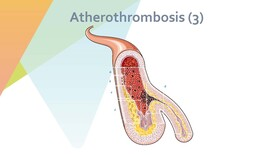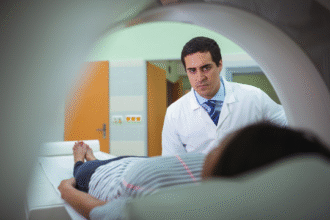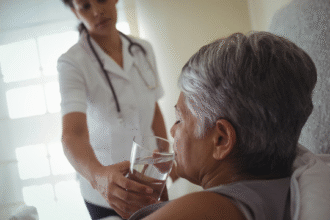Atherosclerosis of the Extremities
Atherosclerosis of the extremities, also known as peripheral artery disease (PAD), is a condition characterized by narrowed arteries that reduce blood flow to the limbs. It most commonly affects the lower extremities, leading to symptoms of ischemia and, in advanced cases, tissue damage.
Key Points
- Atherosclerosis of the extremities primarily affects the leg arteries.
- Symptoms range from intermittent claudication to severe ischemia and gangrene.
- Early diagnosis and management are crucial to prevent complications.
Clinical Presentation
Symptoms
- Intermittent claudication:
- Typical “walk-pain-rest-relief” pattern.
- Pain occurs at a consistent walking distance and resolves with rest.
- Signs of limb ischemia:
- Pale, cold, and numb affected limb.
- Muscle atrophy, soft tissue loss, and bony prominence.
- Thinning skin, hair loss, and thickened, atrophied nails.
- Advanced stages:
- Ischemic ulcers on toes and bony prominences.
- Persistent pain and gangrene in severe cases.
Acute Ischemia
- Causes:
- Thrombosis in a narrowed arterial segment.
- Embolization from a proximal ulcerated atheromatous plaque.
- Symptoms:
- Sudden worsening of ischemic symptoms.
- Complete arterial obstruction leading to acute limb ischemia.
Diagnostic Methods
- Physical examination:
- Weakened or absent pulse in arteries distal to the obstruction.
- Differences in pulse strength between limbs.
- Auscultation:
- Bruit in the abdominal aorta, iliac arteries, femoral arteries, or popliteal arteries.
- Systolic bruit indicates arterial stenosis.
- Continuous bruit suggests severe occlusion and insufficient collateral blood flow.
- Exercise testing:
- Bruit may only appear after exercise in some cases.
Complications
- Chronic ischemia:
- Leads to tissue malnutrition, muscle atrophy, and skin changes.
- Acute ischemia:
- Sudden arterial obstruction causing severe pain and tissue damage.
- Gangrene:
- Severe arterial stenosis or occlusion can result in tissue necrosis.
Management Strategies
Lifestyle Modifications
- Smoking cessation:
- Reduces progression of atherosclerosis and improves outcomes.
- Exercise therapy:
- Supervised walking programs to improve circulation and reduce symptoms.
- Dietary changes:
- Heart-healthy diet to manage cholesterol and blood pressure.
Medical Interventions
- Medications:
- Antiplatelet agents to prevent thrombosis.
- Statins to manage cholesterol levels.
- Vasodilators to improve blood flow.
- Revascularization procedures:
- Angioplasty and stenting to restore blood flow.
- Bypass surgery for severe cases.
Challenges and Future Directions
- Challenges:
- Early detection of asymptomatic cases.
- Managing advanced ischemia and preventing limb loss.
- Future directions:
- Advances in minimally invasive revascularization techniques.
- Development of novel therapies to enhance collateral circulation.
Patient and Public Education
- Raise awareness of the symptoms and risks of atherosclerosis of the extremities.
- Promote regular health check-ups for early detection and management.
- Encourage healthy lifestyle choices to reduce the risk of vascular disease.
Atherosclerosis of the extremities is a significant vascular condition that can lead to severe complications if left untreated. Early diagnosis and comprehensive management are essential for improving outcomes and preserving limb function.







